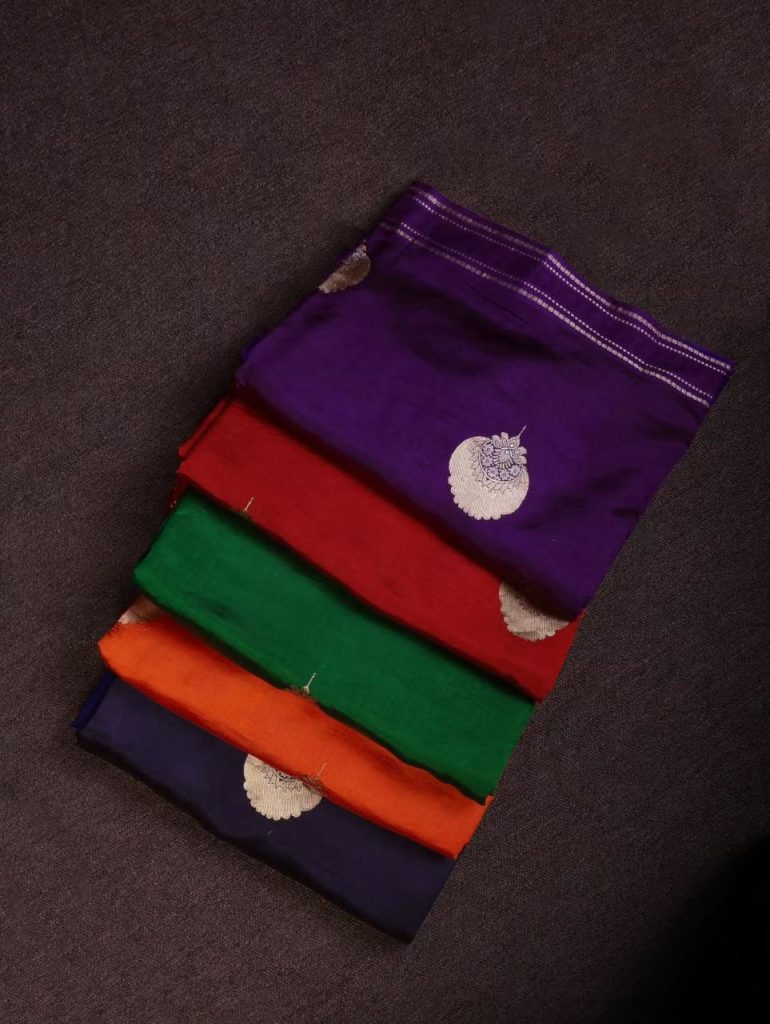In an era where fast fashion dominates wardrobes, there’s a quiet but powerful movement gaining momentum—handloom handicraft. Rooted in tradition, rich in culture, and woven with love, handloom work represents more than just beautiful fabrics—it symbolizes heritage, sustainability, and the skilled hands of local artisans.
What is Handloom Handicraft?
At its core, handloom handicraft refers to textiles woven manually on looms without the use of electricity. It’s a labor-intensive process that results in unique and high-quality fabrics. These pieces are often turned into exquisite sarees, dupattas, stoles, and home décor items like cushion covers and curtains.
Each region in India (and around the world) has its own distinct weaving tradition—from the Banarasi saree of Varanasi to the vibrant Ikat patterns of Odisha, from the earthy tones of Kutch embroidery to the sophisticated Chanderi fabrics.
Why Handloom is More Than Just Fabric
Handloom is not just about the finished product. It’s about community. It’s about stories. Each saree or dupatta carries with it the legacy of generations who have passed on their skills, patterns, and passion.
More importantly, supporting handloom means supporting thousands of weavers and artisans who rely on this traditional craft for their livelihood. In a time when machine-made products flood the market, handloom helps preserve indigenous skills and ensures that craftsmanship does not become obsolete.
A Sustainable Choice
If you’re a conscious consumer, here’s some good news: handloom fabrics are eco-friendly.
Unlike synthetic materials, handloom weaving does not require large factories or emit harmful pollutants. It uses minimal electricity and often involves natural dyes. This makes every handloom saree, dupatta, or shawl not just a fashion statement—but a planet-friendly one too.
Modern Twist on Tradition
Think handloom is just for your grandmother’s wardrobe? Think again.
Today’s designers are giving this ancient craft a modern spin. Fusion fashion is trending—imagine pairing a handloom crop top with jeans, or draping a bright, handwoven dupatta over a solid jumpsuit. Even western silhouettes are being crafted using traditional fabrics, creating pieces that are both edgy and rooted.
Celebrities and influencers have also embraced this movement. From Deepika Padukone donning a classic Chikankari saree to influencers showcasing colorful Jamdani dupattas in their reels—handloom is officially in vogue.
Popular Handloom Products to Explore
Whether you’re a fashion lover, a collector, or simply someone who wants to support ethical products, here are a few handloom staples worth checking out:
1. Sarees
The queen of all handloom creations. From Kanjeevaram to Pochampally, each saree is a wearable piece of art.

2. Dupattas
A handloom dupatta can elevate even the simplest outfit. Opt for a Phulkari, Banarasi, or Kota Doria to add elegance and color to your wardrobe.
3. Stoles and Scarves
Perfect for all seasons. These lightweight fabrics come in various textures and weaves—ideal for both men and women.
4. Kurtas and Dresses
Handloom kurtas are a staple in modern ethnic wear. And yes, designers are now crafting beautiful maxi dresses using these traditional fabrics.
5. Home Décor
Don’t limit handloom to clothing. Cushion covers, bedspreads, rugs, and curtains made from handloom fabrics can give your home an earthy, artistic vibe.
Tips to Identify Authentic Handloom
Unfortunately, machine-made imitations are everywhere. Here’s how to make sure you’re buying genuine handloom:
- Look for the Handloom Mark: A certification issued by the Government of India to promote and protect authentic products.
- Check the Weave: True handloom fabrics will have slight irregularities, a sign that it was made by hand.
- Know the Source: Buy directly from weavers, artisans, or trusted handloom stores and exhibitions.
- Ask Questions: Don’t hesitate to ask the seller about the origin of the product, the weaving technique, or the artisan involved.
Supporting the Movement
By choosing handloom, you’re not just making a fashion statement—you’re becoming part of a global movement that values people over profit, tradition over trend, and sustainability over speed.
You can also:
- Promote weaver stories on social media
- Support NGOs and brands working with artisan communities
- Gif or dupattas on special occasions
- Attend handloom exhibitions or fairs like Dastkar, Surajkund Mela, or local craft bazaars
Final Thoughts
The beauty of handloom handicraft lies in its imperfections. Each thread has a tale, each color a history. As we move toward more conscious consumption, embracing handloom fabrics is not just about going back to our roots—it’s about moving forward with responsibility.
So next time you’re shopping, pause before picking up that mass-produced dress. Instead, wrap yourself in a handcrafted saree, drape a story-rich dupatta, or even frame a woven textile as art—because handloom is not just fashion. It’s culture. It’s soul. And it’s worth preserving.